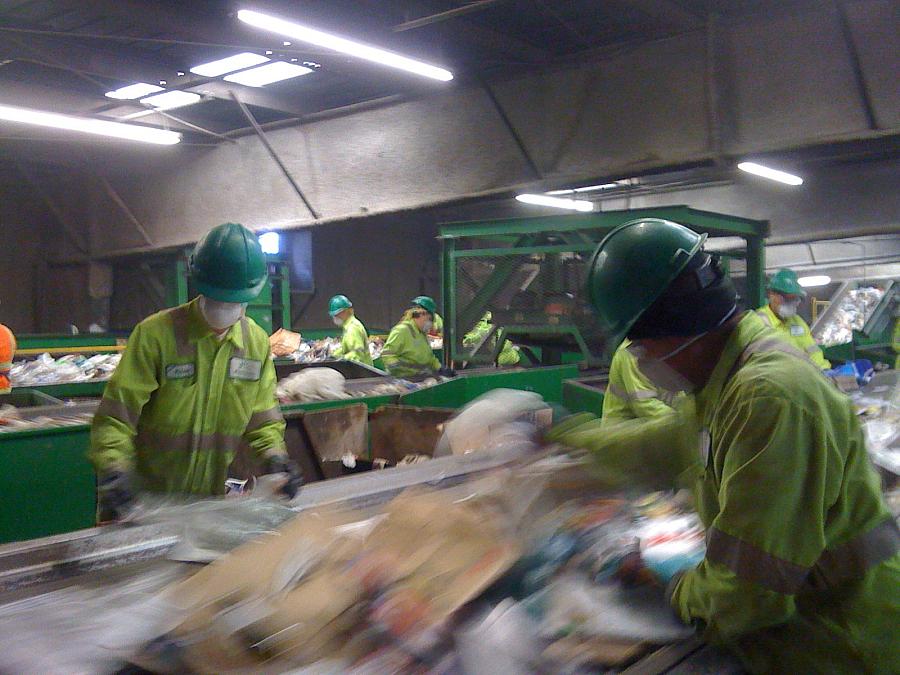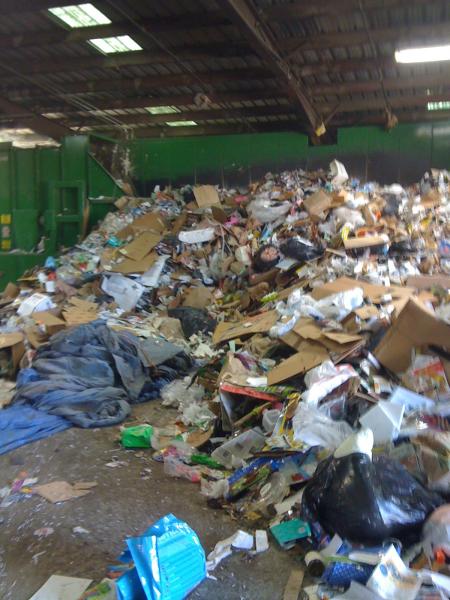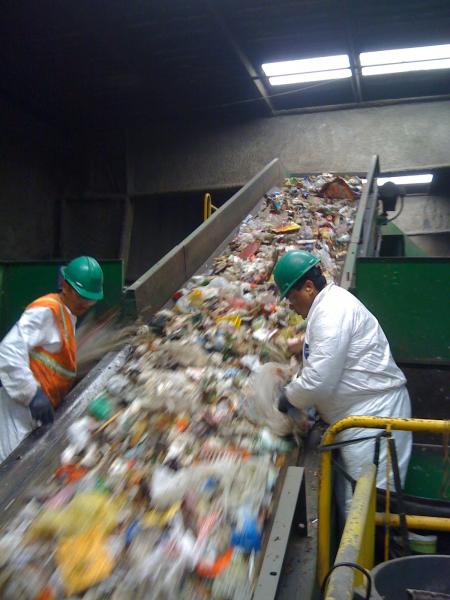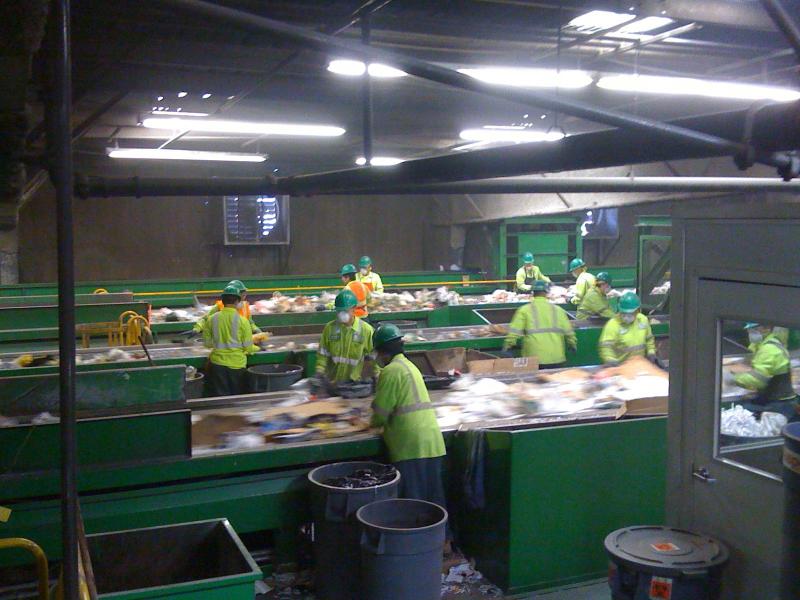America's Trash Pickers

 We've all seen the photos of trash pickers in the developing world – whole families that spend their days crouched in landfills picking through other people's garbage for items they can sell to recycling companies to get cash to pay their bills. It's an enduring, upsetting image.
We've all seen the photos of trash pickers in the developing world – whole families that spend their days crouched in landfills picking through other people's garbage for items they can sell to recycling companies to get cash to pay their bills. It's an enduring, upsetting image.
So are the images that I came away with from a tour last week of the GreenWaste Recovery recycling facility in San Jose, which the contents of my recycling bin pass through on their way to Asia. (In general, there is not much of a market for recyclable materials in the United States.)
For years, my community, Palo Alto, California, required its residents to sort their recyclables – plastics and glass in one bin, metals in another, paper and cardboard in a third. When we were forced to switch to single-stream recycling a few years ago and put everything in one big bin, I had trouble understanding how it could possibly make sense economically to pay human beings to sort through thousands of tons of recyclables every day.
After touring the facility, I still do. It takes a lot of workers and expensive equipment to separate recyclables at the plant. Because there's no domestic market for many of the materials, GreenWaste actually has to pay to send some of them overseas. On the plus side, recycling keeps our landfills from filling up too quickly and makes us feel good about throwing things away. GreenWaste recovers 98 percent of the materials we put in our recycling bins and 75 percent of the materials people put in their regular trash.
 But today's modern recycling plan is, at its root, an American version of the Third World dump, with scores of mostly male, mostly Latino workers earning $12.83 an hour to sort through not just glass, paper, and cans, but regular trash. Yes, regular trash. Dirty diapers and wet and mildewing pillows and improperly discarded hypodermic needles and broken bottles and rotting food travel up the conveyor belt along with aluminum cans, detergent jugs, and plastic bags. Picking through all this must be one of the foulest, most stress-inducing jobs in America.
But today's modern recycling plan is, at its root, an American version of the Third World dump, with scores of mostly male, mostly Latino workers earning $12.83 an hour to sort through not just glass, paper, and cans, but regular trash. Yes, regular trash. Dirty diapers and wet and mildewing pillows and improperly discarded hypodermic needles and broken bottles and rotting food travel up the conveyor belt along with aluminum cans, detergent jugs, and plastic bags. Picking through all this must be one of the foulest, most stress-inducing jobs in America.
To begin with, the stench is overwhelming. "You get used to it," our guide told us. The noise is deafening, despite earplugs. Conversation is impossible. The conveyor belts move faster than any assembly line I've ever seen. Debris is constantly flying here and there; many workers wear face masks.
This is hard work. I would have guessed that most people wouldn't last long at it. But the guide told me that there had been virtually no turnover in the last two years, a sign, no doubt, of our desperate economic times. I have great respect for anyone who does this job, day after day.

There are innumerable stories for health reporters to explore in a scenario like this. What kinds of workplace injuries are common for people who work these jobs? Repetitive stress and back injuries, for sure. Hearing loss. Respiratory illnesses. Tension headaches. Broken bones, perhaps, from falls off the metal catwalks that crisscross the giant building. Eye injuries, perhaps, flying debris. Puncture wounds – and perhaps even blood borne diseases – from hypodermic needles. And then there's the stress. I kept wondering how these workers managed to relax when they got home.
I finished the tour understanding that a human being somewhere is paying a big price for every single thing we throw away, recyclable or not. Reducing waste as much as possible, not simply recycling it, is the only way to feel good about any of this.

